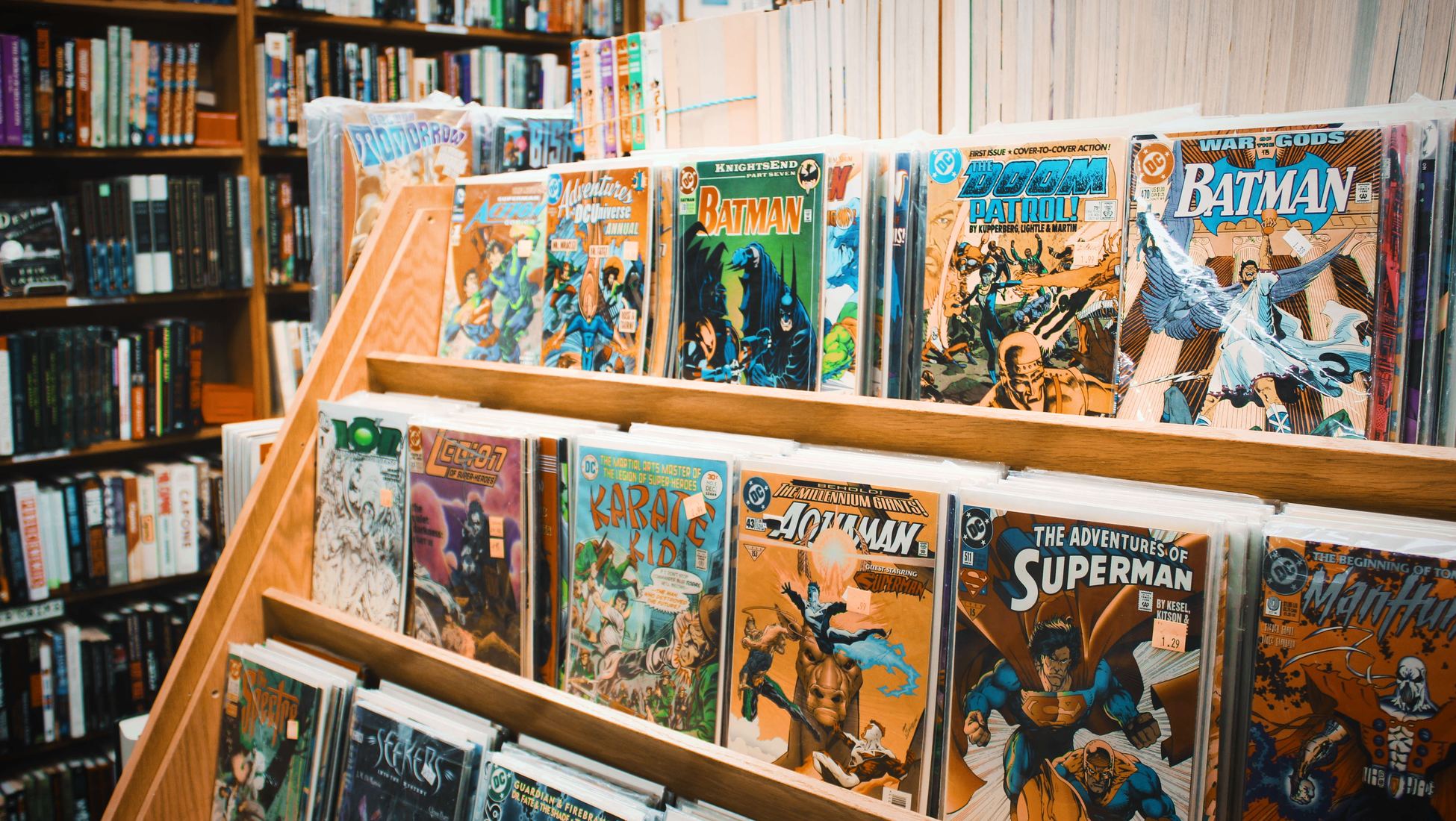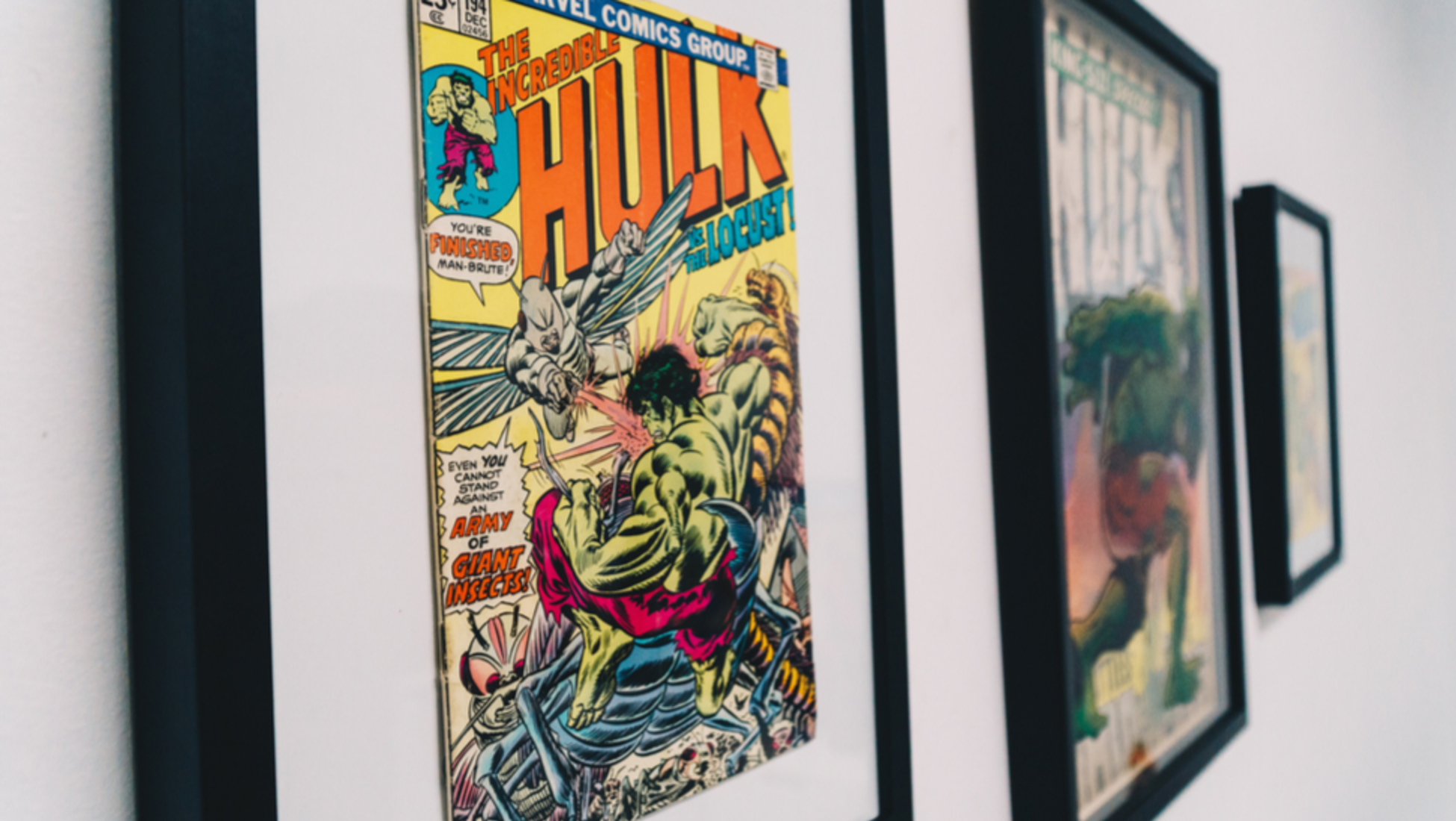Written by John Kamminga | 18th October 2019
The rivalry between D.C. and Marvel has been debated and dissected ever since the two companies emerged as the biggest comics publishers in the U.S. Accusations of copyright infringement, appropriation and even outright plagiarism are regularly made by the fans and even the artists. Interested to know more, we’ve asked comics fan John Kamminga to take us on a journey through this epic rivalry, via three (or should that be six?) legendary comics series.
X-Men (1963 - The Silver Age of Comics)
A story about a group of misfits, outcast from society for being different and who find refuge in the care of a highly intelligent, wheelchair-using man. Under this man’s care, the misfits hone their powers, fight for the protection of the entire human race (even though society doesn’t really do anything to protect them in return) and face off against an evil Brotherhood. No, not the X-Men – we’re talking about Doom Patrol.
While proof is thin and Doom Patrol was only published two months ahead of the X-Men back in 1963, the similarities between these comics is uncanny. This didn’t go unnoticed by creator Arnold Drake (Doom Patrol) either, who accused writer Stan Lee (X-Men) of stealing his ideas. How that happened, or how true that may be, remains a mystery to this day.
What isn’t a mystery, however, is the reception and popularity of both these teams. While Doom Patrol has had many iterations throughout the years in comic books–they appeared in a couple of animated episodes of Teen Titans and Batman–it wasn’t until their appearance in D.C. Universe’s Teen Titans that a live-action version was created. This team has now jumped into the fray with their own stand-alone series The Doom Patrol: 19 years after Marvel’s X-Men first graced the silver screen.
 A wall of D.C. superheroes
A wall of D.C. superheroes
Deadpool (1990s - The Dark Age of Comics)
During the late eighties and early nineties, the tone of the stories and imagery in comics shifted to reflect a grittier reality. Famous authors like Alan Moore (Watchmen, The Killing Joke) and Frank Miller (Sin City, 300) broke into the mainstream in this period. It’s in this context that we should view the creation of Deadpool, first appearing as a supervillain in 1991 in an issue of New Mutants. But for comics fans, we’ve seen someone like Deadpool before. Namely, D.C.’s Deathstroke.
Deathstroke’s real name is Slade Wilson, while Deadpool is called Wade Wilson. They are both highly trained ex-military men with super-agility and regenerative abilities. While their beginnings were hugely similar, their paths diverged fairly early on. Deathstroke stuck to the antagonistic side of things, growing to be one of the biggest supervillains in recent D.C. comics history. Deadpool, on the other hand, flirts with the line between good and evil: becoming the epitome of the anti-hero that the 90s were so well known for.
Deadpool’s most well known characteristic is the fact that he knows he’s a comic book character. Throughout the comics, Deadpool makes references to the real world and can’t stop himself from breaking the fourth wall. This resulted in him making a comment back in 2001, that he looks like a cross between Ryan Reynolds and a Sherpa. In a nod to the fourth wall, a series of live action films have been produced with Ryan Reynolds portraying Deadpool.
Meanwhile, Deathstroke only graced the screen in a short post credit-scene to the critically maligned Batman v Superman movie, where he was recruited by Superman supervillain Lex Luthor. It would appear that in the case of the Deathstroke v Deadpool debate, a life of crime really doesn’t pay.
 The Incredible Hulk, one of Marvel's best known creations
The Incredible Hulk, one of Marvel's best known creations
The Squadron Supreme (Present - The Modern Age of Comics)
The Squadron Supreme finds its roots in the Squadron Sinister, a team of supervillains that included the likes of Doctor Spectrum, Hyperion, Nighthawk and the Whizzer (D.C’s Green Lantern, Superman, Batman and the Flash, respectively). Used as a foil for the Avengers to battle in 1969, they have since gone through multiple different iterations.
During the huge Secret Wars storyline, this alternate Justice League stood side by side with their Marvel counterparts as the Squadron Supreme, which added Power Princess (arguably a derivation of Wonder Woman) to their ranks. The fall out from the Secret Wars split the Squadron, with some of the heroes dead and some of them simply going their own way. It came as a surprise to many a Marvel fan when in early 2019, they returned to Marvel’s main reality (Earth-616) in the form of the Squadron Supreme of America.
In the current storyline, they are cast as the defenders of the capital of the U.S., trained and instructed by S.H.I.E.L.D.-agent Phil Coulson, who was presumed dead. And the reason there’s a need for this new squad of super heroes? The Avengers have broadened their horizons and become a global peacekeeping force, severing ties with the U.S. Which leaves Marvel fans waiting eagerly for the salivating prospect of these D.C. heroes clashing with the latest iteration of the Avengers in the aftermath of the War of the Realms storyline.
____________________
Check out our latest US Comics & Original Comic Art auctions or register as a seller with Catawiki.
Discover more Comics | US Comics & Original Comic Art | Marvel Comics
You might also like:
How Spider-Man proved that teenagers can also be superheroes
How Pilote reclaimed European comics for the French
Why Italy’s conservative press tried to censor the fumetti neri comics

